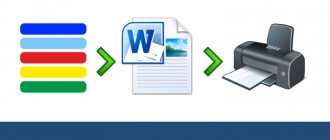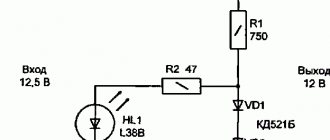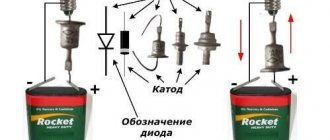The profession “Electrician for power networks and electrical equipment” appeared almost immediately after electricity began to enter the everyday life of mankind. This is directly related to the fact that lighting fixtures and electrical networks needed to be maintained by someone. Today, such specialists arrange the supply of electrical wiring and lighting in residential and industrial buildings, install transformers and electric motors, and also install overhead and ground cable power supply lines.
Basic information about the profession
An electrician for power networks and electrical equipment is a skilled worker involved in the installation and installation of equipment, wiring of electronic circuits and networks to ensure normal living and working conditions in urban and rural areas. This is a very responsible profession, because inattention and mistakes can lead to big problems, including fires, explosions and other negative consequences that can harm human health and material objects.
The main feature of an electrician’s work on power networks and electrical equipment is that the master must move from one object to another. Most often, workers work in pairs or in entire teams. The main skills required to perform high-quality work are good vision, sensitive hands, clear coordination of movements, imagination and technical thinking. The level of access to different types of tasks depends on the rank that the specialist has received.
Electrician of the second category
An electrician for electrical equipment for power and lighting networks who has received the second category can install and seal fasteners, brackets, hooks, as well as fastening structures intended for magnetic starters. They are allowed to manually remove cable coverings and independently produce parts that do not require precise dimensions. Specialists of this category are tasked with installing grounding connections, punching sockets and other holes after a senior employee makes the markings.
The training of an electrician in power networks and electrical equipment of the second category should include knowledge of the brands of cables and wiring, and the main range of metals used in electrical appliances.
§ 438. Electrician for power networks and electrical equipment, 2nd category
Characteristics of the work . Installation and sealing of fastening parts. Installation of brackets, hooks, structures for magnetic starters. Removing the top jute cover of the cable manually. Production of small fastening parts and gaskets that do not require precise dimensions. Manually driving in grounding electrodes. Painting of cables and grounding bars. Punching nests, holes and grooves along the finished markings manually.
Must know: main brands of wires and cables; assortment of non-ferrous and ferrous metals; basic materials used in the manufacture and installation of electrical structures; main types of tools used for electrical installation work; simple electrical wiring diagrams.
Electrician of the third category
A specialist of this category is entrusted with cutting cables with a voltage not exceeding ten kilowatts and processing its edges. Also, the responsibilities of an electrician for power networks and electrical equipment include sealing holes for grounding and wiring passing through the walls of buildings. He has the right to install grounding, paint equipment, and dismantle distribution cabinets of various types. In addition, his responsibilities may include dismantling simple ballast equipment. He can be entrusted with welding work with grounding buses and fastening structures, followed by their subsequent mechanized processing. His responsibilities include installing lighting, creating holes for them, sorting equipment and materials before carrying out work in buildings of various types.
An electrician's knowledge of power networks and electrical equipment of the third category must include types of fasteners, how simple devices, devices and tools that operate on electricity are constructed. He must know installation and technical diagrams, how to operate rigging equipment, what types of welding equipment there are, and how to work with it. He must also understand the rules for assembling equipment for work in different types of buildings.
Electrician of the fourth category
The job description of an electrician for power networks and electrical equipment of category 4 includes responsibilities, including working with wires and cables in all ways, in addition to welding; of various brands with a cross-section not exceeding 70 millimeters square. He may be tasked with installing fences and protective enclosures. His responsibilities include marking equipment, fastening devices using a mounting gun, soldering work with cables and wires, adjusting and checking the voltage in the network, installing support-type structures, including the gluing method.
In addition, a specialist may be entrusted with the installation of structures intended for cable-type wiring, installation of steel and plastic pipes for conducting communications inside buildings. He can be engaged in the assembly of devices and materials for work by specialists in industrial and engineering buildings. Such a specialist has the right to install panels, traffic lights, boxes, boxes and other equipment according to ready-made markings, if its weight does not exceed fifty kilograms. He may be tasked with measuring the resistance of insulating materials in equipment, wiring and cables.
An electrician for power networks and electrical equipment must know the structure of the electrical equipment he is installing, all the methods for measuring insulation resistance, how pipes and wiring are marked, etc.
Responsibilities of a third-class employee
The job description of a 3rd category electrician implies that he is responsible for performing simple work with secondary circuits, including cutting a cable whose voltage does not exceed ten kilowatts and all its ends are temporarily sealed. He also installs dowels, seals passages for various types of wiring laid in the walls of buildings, rolls out cables and wires, installs drums on them, installs grounding and grounding devices.
In addition, the employee is responsible for dismantling devices and devices of a simple type, including lever-type switches, support insulators, rheostats, fuses, transformers, etc. The worker must, using mechanical tools, create holes for laying communications and install branch boxes for wires and cables.
Electrician of the fifth category
The responsibilities of an employee with the fifth category include marking out places where all the equipment necessary to provide the building with electricity and related equipment will be installed and assembled. The mass of the latter should not exceed one hundred kilograms. Also, his responsibilities may include installation of equipment, which includes recorders. In addition, he installs busbars of various types, if their cross-section does not exceed 800 square millimeters. He is engaged in filtering and drying oil for transformers. His responsibilities include testing and trial runs of remote controlled circuits, connecting various meters to the network. The specialist must be engaged in adjusting ballast equipment, laying pipes that do not exceed half a ton in weight, as well as laying pipes in the foundations of buildings.
It is worth paying special attention to methods of inspection and other work with electrical equipment, marking rules, taking measurements and creating sketches. An electrician must know how to assemble and secure open and closed mains, distributors and other electrical equipment. This list includes knowledge of the circuit structure and insulation characteristics of transformers.
Basic qualification requirements
To begin performing certain duties, an employee must have a certain rank. His admission to perform work of varying complexity depends on this indicator. There are six categories in total, from the simplest to the most complex, respectively. For each category there is a list of knowledge and skills that an employee must possess. All information about them is indicated in ETKS.
To receive a rank, a person must pass an exam before a special commission, which includes testing theoretical knowledge and the ability to practically work with electrical equipment. This is how the rank is assigned. For example, an employee with a 4th category can perform the duties of a 5th category electrician only under the supervision of a more experienced and qualified employee. That is, if a person is hired with an insufficient level of qualifications to perform all the necessary duties, then a person whose documents indicate his high access to various works with electricity must periodically work with him. Otherwise, you need to hire an employee with a sufficient level of qualifications.
Electrician of the sixth category
An electrician for power networks and electrical equipment of the sixth category must mark the places where electrical equipment and other structures will be installed. He can install devices that weigh more than one hundred kilograms, including distribution panels, cabinets equipped with high-voltage equipment, and filters. He also installs busbars with a cross-section exceeding 800 square millimeters, and installs pipe blocks heavier than 500 kilograms.
His responsibilities include installing power equipment in areas where there is a risk of explosion, as well as checking and adjusting these devices. He must be involved in overhauling, as well as installing pumps of various types, taking measurements and creating sketches of complex power devices and wiring. Among the knowledge, a specialist of this category must have all the information necessary for him to perform his job duties. Such a specialist has at least secondary specialized education.
Rights
The electrician's instructions on power networks and electrical equipment imply that he has the right to manage and give instructions to his employees depending on his duties. Monitor the implementation of instructions, request materials and documentation necessary for its work. In addition, he can interact with other services if necessary, get acquainted with management plans if they relate to the activities of his departments. If he has ideas on how to make his work more perfect, he has the right to propose them to management. If his employees have distinguished themselves, the specialist can offer management encouragement for their actions, as well as holding them accountable for violations of the labor process. He has the right to inform management about any violations that he discovered during his work.
Responsibility and rights
A very important part of the instructions is the responsibilities of a 4th category electrician and others, but also no less important, it contains a list of employee rights and responsibility for fulfilling their work duties.
Most of the rights of workers are granted to them by the legislation of the country. Such clauses cannot be changed by the management of the enterprise. But many organizations have a work pattern in which they can add additional rights to this list. Basically, among the amendments made to the list of rights, an employee can find the following:
- The ability to request from management the assistance that an employee needs to carry out his duties.
- Have access to all projects for review that relate to his work activity and duties as an electrician.
- Have the right to propose improvements that can improve the work of the enterprise in the area of its responsibilities.
- The electrician may require obtaining all the information on which the ability to perform his duties depends.
An employee’s responsibility for violations of work or failure to comply with safety rules is fully prescribed by law. If he does not fulfill his duties, then labor law applies. If he violates rights, then liability depends on administrative and criminal law, depending on his actions, and so on.
At the moment, this profession is quite popular and highly paid. To master it, secondary vocational education is sufficient. Most often, enterprises need people who can perform the duties of an electrician of the 3rd category and above.









